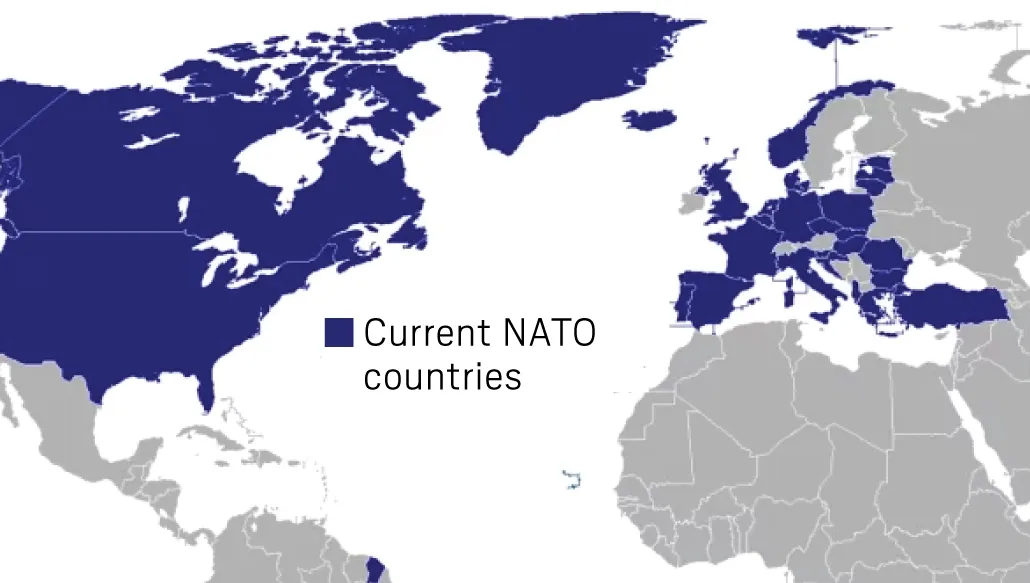BICOM
BICOM provides accurate, timely and balanced information that is read by officials, experts, journalists and many others.
Gaza Strip: The IDF has continued to expand its ground operations, targeting Hamas strongholds.
- In northern Gaza, troops have continued their campaign against Hamas battalions in Jabalya and Shajaiya. They are considered large and powerful Hamas strongholds. In additions, hundreds of Hamas fighters fled there during the pause from other strongholds that the IDF had already conquered.
- Over Sunday night, the IDF attacked approximately 200 Hamas targets.
- The ground battles have also began on the outskirts of Khan Yunis in the south.
- In parallel, the IDF has continued to call on civilians to evacuate areas due to be targeted. The IDF has dropped leaflets, sent text messages and even called residents’ phones. In addition, the IDF is using an interactive “evacuation map”, which divides the Strip into 2,300 zones, meant to help guide the civilian population to safety.
- It is unclear to what extent the residents are heeding these calls to evacuate. So far there has been only a slow flow of people leaving Khan Yunis
- Even in the north, despite significant IDF warning, there remains a civilian population that did not move to the south and stayed in both Jabalya and Shajaiya, posing further challenges.
- On Sunday night, the IDF announced that the commander of Hamas’s Shati Battalion, Haitham Khuwajari, had been killed. According to the IDF, he ordered Hamas terrorists into Israeli territory on October 7. Khuwajari was also in charge of Hamas’s security activity in Shifa Hospital and was in command of the fighting against IDF troops in the Shati camp.
- Also over the weekend, IDF combat jets killed the commander of Hamas’s Shajaiya battalion. Wassim Farhad was responsible for sending the Nukhba fighters who raided Kibbutz Nahal Oz and the nearby army outpost on October 7.
- Speaking on Sunday night, IDF Chief of Staff Halevi said, “as we fought hard and thoroughly in the northern Gaza Strip, so shall we now in the southern Gaza Strip. Yesterday, today, we killed battalion and company commanders, and many operatives, and yesterday morning we began the same course of action in the southern Gaza Strip. It will be just as powerful and will get just as many results, and Hamas’s commanders will find the IDF in a very powerful position everywhere.”
- This morning, the IDF announced three more soldiers have been killed, taking the total to 74 since the ground incursion began.
Context: The IDF campaign is continuing to target what remains of Hamas military positions in northern Gaza, but also in the south.
- There is now significant focus of air strikes on Khan Yunis, where it is thought the top Hamas leadership, including Yahya Sinwar, is located.
- This stage of the war is particularly complex due to the increased population density in Khan Yunis as a result of people having left the north.
- Khan Yunis is the second largest city in the Strip. Before this conflict it had a population of around 200,000 which is now thought to have doubled.
- It is further complicated due to the likely location of the remaining hostages.
- A significant part of the campaign has targeted Hamas’s network of tunnels. On Sunday, the IDF announced that since the beginning of ground operations they have located over “800 shafts.” Adding, “about 500 of the tunnel shafts have been destroyed using a variety of operational methods, including with explosives and blocks. Some of the tunnel shafts connected Hamas’ strategic assets via the underground tunnel network. In addition, many miles of the tunnel routes have been destroyed. The tunnel shafts were located in civilian areas, many of which were near or inside civilian buildings and structures, such as schools, kindergartens, mosques and playgrounds. IDF soldiers located large quantities of weapons inside some of the shafts. These findings are further proof of how Hamas deliberately uses the civilian population and infrastructure as a cover for its terrorist activity inside Gaza.”
- “After locating the shafts, IDF troops carry out thorough investigations in order to understand the characteristics of the tunnels and then prepare the underground route for its destruction.”
- Despite a total of 110 returned captives, there remain 137 hostages inside Gaza – two children, nine Thai nationals, 20 Israeli women and 106 men.
- Based on information garnered from those released, Israel has confirmed that six hostages are dead and their bodies are being held in Gaza. They include Col. Assaf Hamami, the commander of the southern brigade in the Gaza Division, who was killed on October 7 and his body taken to Gaza. He is the third division commander killed that day.
- During the pause, Israel facilitated the entrance of over 1,200 trucks of aid, around 200 day. Despite a resumption of fighting, 55 trucks of food and medical supplies entered on Sunday.
- Despite IDF advances, as a result of the pause Hamas were able to replenish rocket supplies and have continued to fire on the Israeli home front. Over 10,000 rockets have been fired out of Gaza since October 7.
Northern front: As soon as Hamas broke the ceasefire in the south on Friday morning, so Hezbollah resumed their strikes in the north.
- On Sunday, there were several attacks including close to Bet Hillel about four km from the Lebanon border with 11 people reported injured.
- Again, there was sustained mortar fire towards Mount Dov and other areas close to the border. The IDF responded by attacking Hezbollah positions on the Lebanese side.
- There are continued diplomatic efforts led by the US and France to financially induce the Lebanese government to act to move Hezbollah fighters away from the border.
Looking ahead: The British Royal Air Force will soon begin to conduct surveillance flights over Gaza to help Israel locate hostages. According to the MOD, “surveillance aircraft will be unarmed, do not have a combat role, and will be tasked solely to locate hostages. Only information relating to hostage rescue will be passed to the relevant authorities responsible for hostage rescue.”
- The IDF estimates that it will take another 10 days to complete this second stage of the war in the northern Gaza Strip.
- The campaign in the south will take longer, but once the north is subdued it will free up additional forces.
- Kan News revealed a recording of Shin Bet Director Ronen Bar saying that Israel’s objective is to kill the Hamas leaders, even in “Lebanon, Qatar and in Turkey. It will take years, but it is our generation’s mission, our Munich.” (Munich is a reference of the killing of 11 Israeli athletes at the Munich Olympics in 1972. It took almost 20 years to target all the Palestinian terrorists responsible).
BICOM Background Briefing: Operation Swords of Iron
BICOM published a comprehensive background briefing on Operation Swords of Iron, including background on Hamas, Israeli policy on Gaza, and Israel’s obligations under international law. Read the full briefing here.
PODCAST
Episode 222 | The Arab-Israeli experience since October 7th
In this episode, Jack Omer-Jackaman speaks to Mohammad Darawshe, a leading expert on Jewish-Arab relations. He spoke of the heroic sacrifice made by his cousin Awad on October 7th. They also discuss the high level of national Israeli identification amongst Arab-Israelis since the Hamas massacre, and the future prospects for coexistence. Darawshe is Director of Planning, Equality and Shared Society at Givat Haviva Educational Centre, and a fellow at the Shalom Hartman Institute. He previously served as a city council member in his hometown Iksal and served as a member of The National Committee which drafted Israel’s Coexistence Education policy. He was previously Co-Director of The Abraham Fund Initiatives.
Listen on Apple Podcasts, Spotify and Google Podcasts
“America needs to maintain a balance of power against radical Islam” | Fathom Interview: Jonathan Rynhold. Read here.
Top stories from the UK and Israeli media
The BBC, The Guardian, The Mirror and The Financial Times all report that Israeli ground forces are pushing into southern Gaza. Initial reports from Israeli army radio effectively confirmed Israel has launched a ground operation to the north of Khan Younis. The BBC has also verified images of an Israeli tank operating near the city. The head of the IDF later told troops the IDF was also fighting “strongly and thoroughly” in south Gaza. The Times adds that Gazans in Khan Yunis are being called by the IDF to warn them to evacuate. The Independent adds that some Gazans have stopped heeding such orders.
The Spectator writes that Israel has been changing its tactics in Gaza to heed the wishes of the United States. The Observer publishes its view, quoting Anthony Blinken, “who said: ‘the massive loss of civilian life and displacement of the scale we saw in northern Gaza [must] not be repeated in the south.’ Netanyahu should take notice before it’s too late.”
In The Mirror, Foreign Affairs Committee Chair Alicia Kearns calls for an Israel-Palestine Contact Group to plan for the region’s long-term security. Kearns writes that “bombs do not and cannot obliterate an ideology. Nor can a stable state be constructed from oblivion”.
Reuters, Sky News and The Telegraph all report that three commercial vessels came under attack in international waters in the southern Red Sea, the US military said Sunday, as Yemen’s Houthi group claimed drone and missile attacks on two Israeli vessels in the area. The Carney, an American destroyer, responded to distress calls and helped following missile and drone launches from Houthi-controlled territory, according to US Central Command.
The Financial Times and Sky News both report on the IDF finding and destroying Hamas tunnels in Gaza, with Sky News publishing an IDF video, showing soldiers destroying tunnels.
The Economist writes that: “on December 1st Israel embarked on what could be the most crucial stage in its war in Gaza. Its week-long truce with Hamas collapsed early that morning and its forces began to converge on the Islamist movement’s main remaining strongholds throughout the coastal strip. The tactics will be different in this phase but to many watching the mounting Palestinian death toll, that will be of little relevance. Israel is acutely aware that time and support for its offensive in Gaza are running out—and that it has an impossible set of aims to achieve before that happens.”
In The Guardian, Jonathan Freedland writes: “The laziest form of politics is practised by those who pretend complex problems are easy or can be solved cost-free. There is, in fact, a terrible price to pay as long as Israel keeps fighting in Gaza, in the form of the deaths of thousands of innocents. And there is a terrible price to pay if Israel stops fighting in Gaza, leaving intact a murderous, eliminationist threat. Neither option is bearable. It is a tragic choice. We cannot do much for the two peoples trapped by that choice, but we can at least admit that we see it.”
The Telegraph reports on Fleur Hassan-Nahoum, the Deputy Mayor of Jerusalem, who tells the outlet that “woke Left-wing activists have formed a toxic alliance with Islamic fundamentalists to stoke antisemitism in the UK”.
Zoe Strimpel comments for The Telegraph, saying that Joe Biden has begun caving to left-wing members of the Democrats in losing sympathy for Israel, and that “the rot of anti-Israel thinking in the highest echelons of American Democratic politics has been in train for some time”.
In The Times, Alison O’Connor publishes: “This is a conflict that is going to be with us for a long time yet. We have an obligation to educate ourselves, not just reflexively throw our support behind one side without knowing the full picture. Our feelings about this war and our visceral emotional responses to it are entirely understandable. But let us remember the context on both sides.”
The Daily Mail reports on the 33rd Caracal Battalion tank unit, Israel’s all-female tank unit which is led by British captain, Tamara, 20, who says her role is “a dream come true”.
The Sun reports that Hamas terrorists who slaughtered 1,200 people in Israel were directly inspired by ISIS terrorists. A phone found on the body of a Hamas fighter after the October 7 attack contained a cache of ISIS material including footage of Mohammed Emwazi, dubbed Jihadi John, beheading a prisoner.
Yediot Ahronot’s Avi Issacharoff focusses on the question of whether or not the Palestinian Authority will be asked to assume control of the Gaza Strip in the event that Hamas is toppled. Prime Minister Netanyahu has repeatedly signalled Israel’s refusal to consider the US’s preference for this happening, and did so again in his latest speech on Saturday night. Issacharoff quotes an Israeli security official saying “the political leadership doesn’t want the PA to return to Gaza Strip. We get it. But he [Netanyahu] doesn’t want an Israeli military administration either. So what does he want? UNRWA? The UN? Perhaps Sweden? You have to understand—there is no serious international option, nobody is standing in line and wants to assume responsibility for running the Gaza Strip. If Israel isn’t planning to assume responsibility, it will have to realize that the PA is the only entity that must be taken into account for the day after Hamas in Gaza.” Issacharoff argues that Netanyahu’s tough line is intended primarily to appease voters who might be tempted to switch to far-right parties if he is seen to have enabled the PA, but that he might ultimately have to reconcile himself to the idea – “not necessarily a return of the PA led by Mahmoud Abbas as we are perhaps imagining at the moment, but perhaps a return of the PA by means of another agency that is identified with Fatah.”
In another story concerning “the day after”, Israel Hayom reports that Israel has informed its neighbours Egypt and Jordan, along with the United Arab Emirates and Saudi Arabia, that it intends to form a buffer zone on the Gazan side of the border to prevent future attacks on Israel’s southern communities. Haaretz quotes unnamed western officials’ concern that such a measure might become permanent. “Israel says that it wants to end Hamas rule, but it isn’t ready to say what will be in Gaza the day after Hamas,” said one diplomat. “Saying that [for] several months after the war is over, it will be prohibited to go within a kilometre or two from the border fence is logical. But after a new government is established and takes responsibility, that arrangement can’t remain in place forever.”
Maariv features a report from economic newspaper The Marker by American researchers appearing to show that Hamas made money by making “unusual transactions” on Wall Street prior to October 7th. “Officials who probably received information from Hamas, raked in large sums because they bet at the beginning of October that the stocks in Israel would collapse.”
Channel 12 reports on Finance Minister Smotrich presenting his wartime budget. Economy Minister Barkat of the Likud has pledged not to vote in favour of the budget on Wednesday, saying that it is unfit to suit wartime economic needs and will lead Israel to “economic collapse”. Reports also suggest Netanyahu is considering firing Barkat. While some previously earmarked coalition funds have been redirected towards the war effort, Smotrich has protected funding for measures popular with his far-right base.
Maariv’s Anna Barsky situates the budget within the context of Netanyahu’s plan for political survival. “Together with… Smotrich, Netanyahu was strict to preserve the coalition money that the ultra-Orthodox had waited for and were worried would be cut. His insistence on giving them this money, despite public opposition, including from among the Likud, is another political step that Netanyahu took to strengthen his coalition. The message that this sends to the ultra-Orthodox parties is unambiguous: ‘I withstood fierce criticism at a very complicated time. Now it is your turn to ensure that the coalition stays intact.’” Amid a bump in his previously cratering approval ratings prompted by the return of hostages, Barsky notices a “change in his mood for the better. For the first time since the October 7 disaster, Netanyahu projected optimism, or at least political optimism.”
Kan Radio reports that Prime Minister Netanyahu’s criminal corruption trial is set to resume this morning after a delay of two months caused by the Knesset’s recess and the war in Gaza. Detectives from Case 4,000 – the so-called Bezeq–Walla affair involving alleged bribery of senior media figures in return for favourable coverage – will testify in the Jerusalem District Court. Netanyahu had been expected to take the stand himself at some point, though there are doubts as to if and when this will now happen. The trial is set to continue now until the next pause before next spring. Haaretz cites David Amsalem, a Netanyahu loyalist and Likud minister in the Justice Ministry condemning the decision to restart proceedings: “War? Hostages? Evacuees? The economy? No and no… What’s most important now is to engage the prime minister of Israel with the unfounded allegations and delusional trifles… It’s an unparalleled disgrace!”
Maariv reports on recordings of Shin Bet Director Ronen Bar pledging to assassinate Hamas’s foreign-based leadership. “We will kill the Hamas leaders in Qatar and in Turkey,” he said. “It will take years, but it is our generation’s mission… Everywhere—in Gaza, in Judea and Samaria, in Lebanon, in Turkey, in Qatar—everywhere. It will take years, but we will be there in order to do that.” Bar also took his share of responsibility once again for the intelligence failures seen on October 7th and warned of other threats to the security of the state. “Responsibility for security is on us,” he said. “It is our duty to provide both security and a sense of security. Unfortunately, we did not do this on October 7. I think that we are improving and we are not waiting. We are even now learning the lessons. We are even now applying them in other theatres, not just in the Gaza Strip, of course. The extent of the threats against the State of Israel was unprecedented this past year, even before recent events. Now too, much is hidden from view. A lot of things are stirring underneath the surface.”
Ynet reports Israeli sources saying the latest Houthi attack on three ships in the Red Sea is a “regional and global issue that affects the global economy and security.” IDF spokesman Rear Admiral Daniel Hagari clarified that the two ships “have no connection to Israel” and added that the incident “demonstrates Iran’s negative subversion in the region.” Two of the ships attacked are UK-owned.
Recommended Reading First Hamas fighters raped her. Then they shot her in the head, Christina Lamb, The Times
- “For the past week, a delegation of Israeli feminists and human rights experts have been in Geneva and New York lobbying to be heard. Tomorrow they will protest outside the UN headquarters, and Sheryl Sandberg, the former chief operating officer of Facebook, will speak.” Read more
Israel’s roadmap to triumph: 5 key steps for overcoming Hamas, Ron Ben-Yishai, Ynet
- “Israel still has challenges ahead. What will happen in the coming days and weeks may not necessarily resemble what we saw in the fighting in Gaza’s north before the hostage release deal. We must hope that the IDF and Israel’s intelligence bodies will succeed together in carrying out the two urgent tasks set to them in this act of the war – both the return of captives and the dismantling of Hamas in Gaza.” Read more
Hamas Needed to Prolong the Cease-fire, but Refused to Pay the Price, Amos Harel, Haaretz
- “The collapse of the truce on Friday is a result of Hamas’ stubbornness. The release of one last group of kidnapped women was scheduled, in exchange for the release of Palestinian prisoners and another day of pause in the fighting. Hamas wished to change the rules.” Read more









